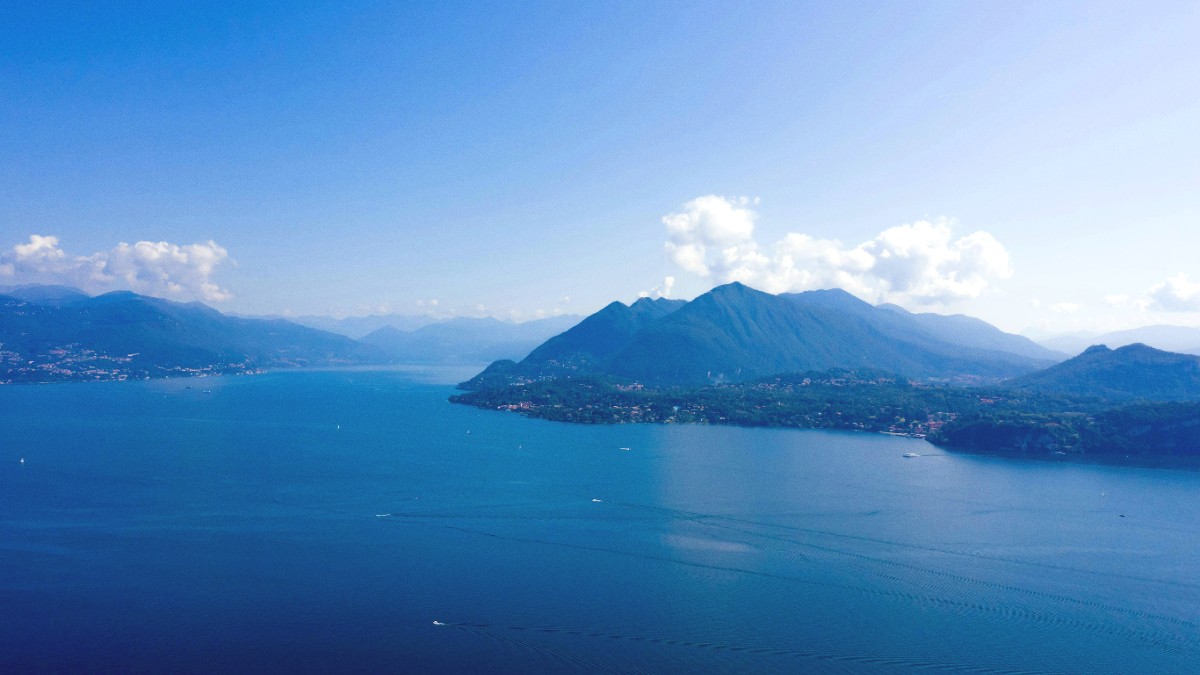
Lombardy And The Lakes, Italy
The lake's cuisine deeply roots itself in its geography. The western shore (Piedmont) brings the influence of rich agricultural traditions, including rice fields, truffle forests, and robust red wines. The eastern shore (Lombardy) leans towards heartier dishes, polenta, and dairy products. Historically, the lake itself supplied food, with its fish forming the basis of many traditional dishes. This blend creates a varied gastronomic experience.
Grand villas and hotels fostered a refined dining culture, contrasting with simpler, rustic trattorias. This regional blend creates unique flavors not found elsewhere in Italy.
Expect more emphasis on: Risotto (often saffron-infused or with lake fish), Polenta (a staple, with braised meats or strong cheeses), Hearty Meat Dishes (reflecting nearby plains traditions).
A stronger focus on: Lake Fish (risotto al persico, fritto misto di lago), Butter in Cooking (more prevalent), Rich Meat Dishes (brasato al Barolo), Truffles and Hazelnuts.
Lunch typically occurs from 1:00 PM to 2:30 PM. Dinner from 7:30 PM to 10:00 PM. Aperitivo (6:00 PM to 8:00 PM) often includes complimentary snacks. "Coperto" (cover charge) covers bread and table service. Cappuccino remains a morning drink; espresso for other times.
A classic lake specialty. Creamy risotto prepared with fresh perch fish, often fried lightly and laid on top. Locate this at most lakeside restaurants.
Find in lakeside trattorias.
A mixed platter of lightly fried lake fish, presenting various local species. Often served with lemon wedges. Look for it at restaurants specializing in fish.
Common in fish restaurants.
A rich Piedmontese specialty. Beef braised slowly in Barolo wine until fork-tender. This hearty and flavorful dish often accompanies polenta.
Found in traditional restaurants on the Piedmont side.
Authentic Italian ice cream from artisanal gelaterias. Panna Cotta, a simple creamy dessert, often with berries or caramel.
Autumn brings wild mushrooms, truffles, chestnuts, and new wines. Winter presents heartier stews. Summer means fresh produce and lake fish.
Luxury hotels in Stresa, like Isole Borromee Restaurant at Grand Hotel des Iles Borromées, feature excellent fine dining. These establishments typically encompass refined Italian cuisine with a modern twist, impeccable service, and extensive wine lists. Reservations become essential.
Numerous trattorias and osterias in all major towns around the lake present traditional Italian and regional dishes in a relaxed setting. They focus on homemade pasta, local meat, and fish. Seek places popular with locals, indicating good quality. Many have "menu del giorno" for lunch.
The culinary scene predominantly is Italian. While some larger towns might include limited international options, adhering to local Italian cuisine presents the most authentic experience. Lago Maggiore does not include large, modern food halls; local markets embody this purpose in a traditional format.
Vegetarian dishes are generally available. Vegan dining needs specific requests (senza carne, formaggio, latte, uova). Focus on vegetable-based pasta, salads.
Many restaurants accommodate. Look for "AIC" stickers for celiac-safe options.
For other allergies, inform staff clearly. Halal and kosher options are extremely limited; self-cater or rely on naturally compliant options.
A translation app for communication is recommended.
Hands-on classes, often with local tour operators.
Day trips to Piedmont wineries, cheese farms, olive oil mills.
Seasonal festivals celebrating chestnuts, mushrooms, fish.
Restaurants along the waterfront for stunning views.
When visiting a market, engage with the vendors. A smile and a few basic phrases foster a more authentic and enjoyable shopping experience.
Practice simple Italian greetings.
For the best selection at popular markets like Luino, arrive early in the morning. This also helps avoid the largest crowds.
Expect a bustling atmosphere.
Venture slightly inland to an agriturismo, a working farm that features accommodation and often serves meals prepared with its own produce. This yields a true farm-to-table experience.
Restaurants on Isola dei Pescatori present an unique setting, allowing dining in a quaint fishing village surrounded by the lake. This experience stands apart from mainland dining.
"Per favore" (please) and "grazie" (thank you) are well-received. Address staff with "Lei" (formal 'you').
Bread usually comes automatically. It accompanies your meal, not as a pre-meal appetizer with oil and vinegar unless specifically provided.
Service charge is often included ("servizio" or "coperto"). Tipping is not obligatory but rounds up the bill or 5-10% for exceptional service is appreciated.
Meals generally unfold slowly in Italy; servers do not rush you. Enjoy the experience and the conversation. You usually ask for the bill when ready.
No rush from staff.
While chefs take pride in their dishes, simple modifications (e.g., leaving out an ingredient due to allergy) are generally accommodated. Complex alterations might be challenging in busy places.
Communicate clearly.
Lago Maggiore's cuisine mainly is Italian, with distinct Piedmontese and Lombardy influences, emphasizing fresh lake fish, rice, polenta, and local cheeses.
Options range from luxury hotel restaurants and traditional trattorias to budget-friendly pizzerias and local markets. Island dining provides an unique setting.
Vegetarian and gluten-free options are available, though vegan, halal, and kosher choices are limited. Communicate allergies clearly.
Exploring Lago Maggiore's culinary landscape presents a rewarding experience. Be open to trying regional specialties and interacting with local food culture. Remember meal times often run later than in some other countries.